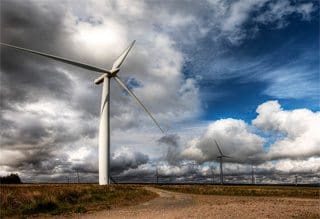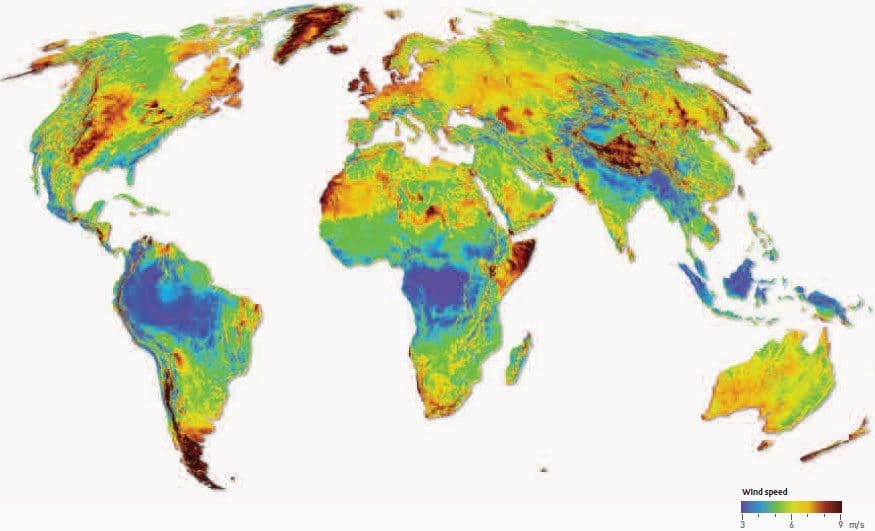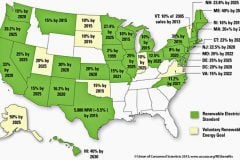
When evaluating different methods of power generation some of the main questions inevitably concern the fuel proposed. Is there enough of it? Is it in the right places? It is available when you want it? What does it cost? What emissions does it have?
What residue does it leave? For wind power generation, wind is of course the ‘fuel’ and these questions are as relevant as they are for any other source.
The last of these questions has the simplest answer: unlike fuels that are burnt, wind is free and clean. Questions about how much wind there is, where it is to be found, and when it is available, however, are very pertinent.
On a global scale numerous studies confirm the enormity of the resource, and how it could theoretically meet global electricity demand many times over. A recent addition to this sequence is a collaboration by researchers at Harvard University in the United States and VTT in Finland that concluded that ‘a network of land-based, 2.5 MW turbines, restricted to non-forested, ice-free and nonurban areas, operating at as little as 20% of their rated capacity could supply more than 40 times current worldwide consumption of electricity’.
A slightly earlier comprehensive study by researchers from Stanford University’s Global Climate and Energy Project based its conclusions on five years of data from the US National Climatic Data Center. Using an extensive set of surface and balloon measurements, they concluded that 13% of the sites tested had a good wind resource (Class 3) at 80 metres off the ground, and using one in five of these sites for power generation would allow wind energy to meet the world’s electricity demand (using the figure from the year 2000) seven times over.
Similarly, an earlier study in 2003 by the German Advisory Council on Global Change calculated that the global technical potential for energy production from both onshore and offshore wind was 270,000 T Wh per year. Assuming 10%–15% of this was realisable in a sustainable fashion, the resulting 39,000 T Wh would meet more than double the current global electricity demand. A literature search shows up numerous similar studies with broadly similar conclusions.
Each of the studies varies in its outcome, depending on the assumptions used. One variable concerns the size, capacity factor and rated power of the turbines used for estimations of wind power potential. In addition, the higher the turbine is mounted, the better the wind resource. Further, higher turbines are less prone to be affected by turbulence caused by obstructions, topography, surface roughness or thermal effects. In addition, advances in technology can not only increase the capacity factor of wind turbines, but also the range of wind speeds in which they can operate, thus broadening the range of sites at which they can be used.

Another variable concerns assumptions about the land areas on which turbines can be deployed. While most studies will rule out conservation areas, forests and urban sites, some types of agricultural land such as pastures are easily compatible with wind farms without constraining the overall wind potential of a region. Methodologies for assessing offshore wind resources also differ in terms of the underlying assumptions used.
An assumption needs to made concerning the areas in which wind farms can be built, both for practical reasons (maximum distance to shore, water depth etc), as well as taking into account environmental and regulatory limitations (nature reserve areas, shipping lanes, minimum distance to shore, etc).
Some new configurations that deploy turbines on floating structures and are thus suitable for use in deep water are at a preliminary stage of test deployment.

These could dramatically increase the technically usable fraction of the offshore wind potential. Evidence from a large number of studies into the world’s wind resources suggests that there is no shortage of suitable sites for wind power development. However, it is worth noting that the rate of deployment of wind power in each county has largely been dependent on political will rather than resource criteria. Germany has a lower wind potential than many other European countries, yet its favourable political climate has led to rapid and large-scale deployment of wind power.
On the other hand, there are numerous parts of the world with a good wind resource – places such as Argentina, Russia and South Africa – where development of wind power has barely started.
Overall, it is clear that the wind’s energy offers a practically unlimited, clean and emissions free power source of which only a tiny faction is currently being exploited. There may be concerns about ‘Peak Oil’ but ‘Peak Wind’ is not a concept that need worry us!











Green energy wind generation and solar are the future of world…. but especially wind generation has been equipped with load flow complications as it has a significant irregularity in generation be governed/influence by climate and the temperature difference,
As a being a state load dispatch center engineer I use to face the problem in the system as frequency variation, voltage jerks, line over loading etc caused by wind generation variation starting from 0 mw to 1400 mw
No such technically governor available to make the gen./ flow of wind steady state, hence often become cause of unstable grid and required backing down operations for the grid safety and security